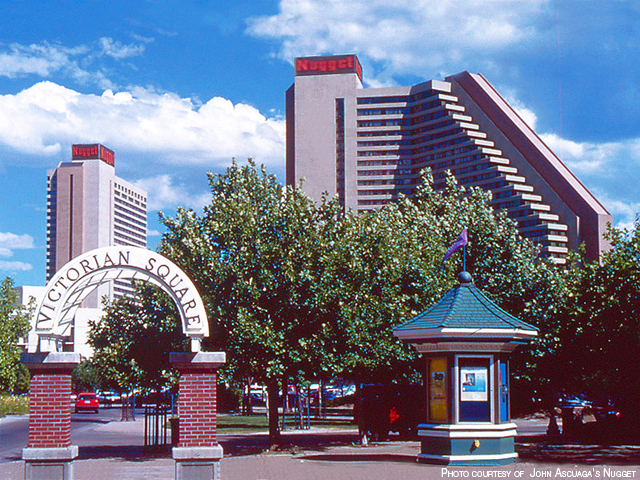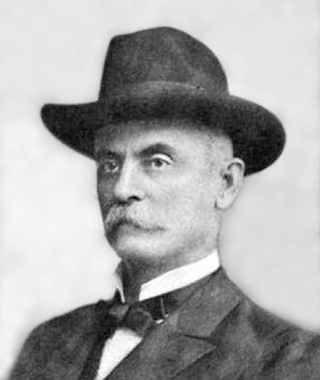
The Place:
At the turn of the nineteenth century, after the Southern Pacific Railroad (SP) realigned their tracks, the new alignment was too far away from their division point in Wadsworth, NV (30 miles east of here).
While looking for a suitable location nearer the mountains, the SP purchased two large ranches in the east end of the Truckee Meadows. The land was subject to spring flooding and was almost a swamp. The SP used 334 rail cars and personnel working two shifts a day for six months hauling in and spreading dirt and gravel to fill in the area. They raised the average elevation by 18 inches.
In 1903-1904, they constructed the largest roundhouse in the world for its time. It was also the largest building west of the Mississippi. They also constructed many support facilities. A tract of land west of the roundhouse at the north side of the railroad land was reserved for employees willing to move from Wadsworth to the new town. There could be no commercial activities conducted in the Reserve. For that reason, as the town grew to support the railroad, all of the businesses were on the north side of the street dividing the railroad land from the town.
Moving day from Wadsworth was July 1, 1904. On that day, houses were dismantled and placed on flat cars for transport, trees were dug up and prepared for shipment, wagons loaded and the migration began.
The town was variously called East Reno, Glendale, and Harriman. The towns folk finally named the new city ‘Sparks’ in honor of then sitting Nevada Governor John Sparks. The Governor threw a barbecue for all at his Alamo Ranch south of Reno.
The city was incorporated on March 15, 1905. It remains a “City of Promise.” Population in 1903 – 8, 1905 – 1,500, 2010 – 90,264
~source
 The Person:
The Person:
Who Was Honest John Sparks?
They called him “Honest John Sparks,” according to a Nevada Historical Society report. He was governor of Nevada and the namesake of the budding city of Sparks. The municipality was only three years old at the time (1908).
In 1970, with pride in the character of the man for whom the city was named, the Sparks Jaycees changed the name of the annual Labor Day celebration to “Governor John Sparks Day.”
“Not many people know that Sparks was named after a rather famous westerner,” Mike Schultz, Jaycee spokesman said that year; “most people think that Sparks refers to some aspect of railroading.”
History does not accurately attest to the “honesty” of the cattle baron John Sparks. However, the fact that he came from average means to great wealth, not once, but several times in his lifetime, might indicate that he was a hard-working, sincere, honest entrepreneur. One report, from the files of the Sparks Tribune, refers to the governor as “public spirited, generous.”
John Sparks came to Nevada in 1868, at the age of 25, after pioneering cattle domain in Wyoming with his partner John Tinnin. The pair purchased Thousand Springs Valley in northeastern Elko County and soon bought out their neighbor Barley Harrell. Their range then extended from the Snake River to Idaho to Pilot Peak in eastern Elko County to the summit of the Salmon River range, a territory equal in size to the states of Connecticut, Delaware, Rhode Island and half of New Jersey.
When asked how many cattle he owned, Sparks said, “We leave those matters to the county assessor, and he comes around once a year. It is an unwritten law that a cattleman never talks of the size of his herd.”
Upgrading cattle became his special interest, and he decided to develop his own pure bloodlines in a herd on his Reno property, the Alamo Stock Farm, which was five miles south on Virginia Street.
Herefords became the chief breeding stock, and in a few short years, Sparks proved that Nevada could produce creatures other than coyotes and jackrabbits. He later imported Hereford stock directly from England.
One of his less successful operations came when he ventured into mining north of this city. He purchased the Wedekind Mines from George Wedekind for $155,000. The mine operated for a very brief period.
As a matter of record, Governor Sparks was a Southerner by origin and breeding. He bore arms for the South during the “Great War of the rebellion,” and one of his special delights in later years was recounting the tales of the “great army” of General Robert E. Lee.
A life-long Democrat, he became Governor of Nevada in 1902 and was reelected in 1904. He died in 1908 and is buried in Mountain View Cemetery in Reno. His name is enshrined in Oklahoma City’s Hall of Fame of Great Westerners.
~source